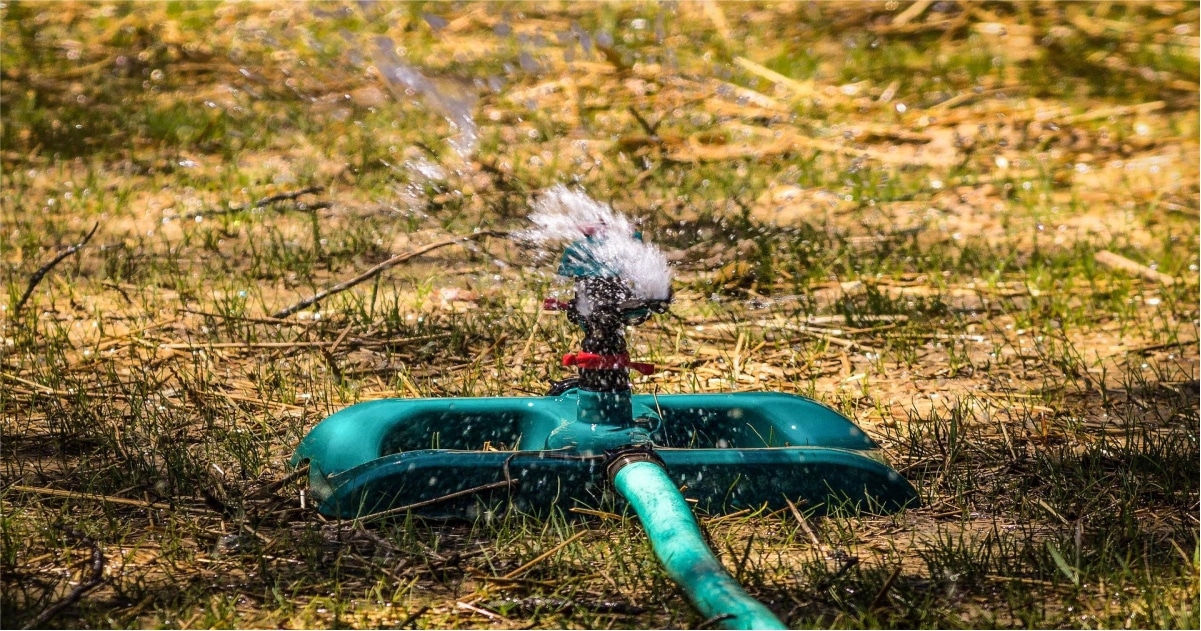Residential irrigation systems are an essential part of any home. They help keep your lawn and garden looking healthy and beautiful, and they can also help save money on your water bill. This blog post will discuss everything you need to know about residential irrigation systems.
We will cover the basics, such as what irrigation systems are and how they work, and more advanced topics like irrigation system troubleshooting. We hope that this blog post will help you understand residential irrigation systems better so you can make the best decision for your home.
1. Lawn Sprinkler System
For landscape watering, lawn sprinkler systems will be the typical choice. Sprinklers are ideal for covering a broad area with the same plant types. Sprinklers are therefore suitable for use on grassy lawns. Sprinkler systems should be used early in the morning or late at night and near sunset during summertime.
When you’re using a sprinkler in the heat of the day, a lot of the water will evaporate, and your grass may get scorched. Watering with a sprinkler is best done at night. There is less evaporation because the water has all evening to absorb and enter the roots. You can use a timer to ensure that your lawn sprinkler system operates at the most optimal periods throughout the day.
An irrigation system expert with experience will help you position your new sprinkler system heads exactly where you want them to guarantee that your lawn gets the proper quantity of water.
2. Drip Irrigation System
Many gardeners opt for a drip system. Drip irrigation systems enable landscapers to control how much water their plant needs and when they get it. They work by delivering water straight to the plant roots through a permeable garden hose. There is little evaporation because the plants frequently cover them, so there is no need to worry about water on the leaves scorching the plants at noon.
You can set drip systems on a timer, and afterward, customized emitters might be attached to provide more or less water to certain plants. Its level of accuracy spares gardeners a great deal of effort and time. “Set it and leave it” is all they have to do.
3. Rain Catchment Drip Irrigation
Many gardens combine drip irrigation alongside rain-catchment systems. Such methods use gravity to distribute water to plants. Whenever the rain stops, your rain barrel collects the water, which you can subsequently deliver to plants. Such methods can’t be tweaked using special timers or emitters, but they save you money on your water bill, even more so throughout summers with plenty of rain.
If you don’t already have a rain catchment system and are thinking about installing one, check your state’s rainwater-harvesting requirements.
4. Bubbler Irrigation System
A bubbler irrigation system is a hybrid of a sprinkler and a drip irrigation system. Bubblers produce higher amounts of water, from around six inches above the ground. They’re made to hydrate your crops from the ground up. You can set it on timers and direct their emitters to water only the specified crops.
Once you have a lot of similar plants in a tight space, bubblers are ideal. Shrubs, raised plant beds, and trees all benefit from them. Consider the plants you’ll care for while choosing between drip and bubblers. The very adaptable drip irrigation system is suitable for locations with many variabilities. The bubbler technique may be appropriate for larger plants or a more uniform outdoor area.
Remember that you can utilize both irrigation systems to satisfy your watering requirements. You might also use sprinkler heads with bubbler nozzles to transform some portions of your garden to bubbler irrigation while still utilizing the sprinkler irrigation system.
Troubleshooting Irrigation and Sprinkler System Issues
If you have an irrigation or sprinkler system, chances are that at some point, you will experience an issue with it. The most common issues include broken lines, leaks, clogged nozzles, and faulty sprinkler heads.
Here are a few tips on how to troubleshoot these issues.
The system is not up and running: Ensure that the water is turned on and that the irrigation controller is appropriately set before calling a landscape contractor.
Sprinkler heads do not rise to the surface: Grass has begun to grow over the sprinkler head. Cut grass out from the sprinkler head and restart the system.
The sprinkler head raises, but no water is released:
Particles may have clogged the sprinkler’s nozzle or screen. Lift the sprinkler and detach the nozzle if this occurs. You should use water to clean the screen underneath the nozzle. Replace the sprinkler head and perform testing now that there is no debris.
The nozzle is pouring in the wrong spots, perhaps too far or too close to the target: The nozzles with most sprinkler systems are simple to modify. In the center of the nozzle’s head, search for a silver adjustment screw. Reduce the spray by turning this screw clockwise, and enhance it by turning it counter-clockwise.
Hire a Professional Landscaper!
While it is possible to install a residential irrigation system on your own, it is recommended that you hire a professional landscaper to do the job for you. They will ensure that the system is installed properly and that all of the necessary components are in place.
The landscape crew can assist you in determining which irrigation methods are appropriate for your garden, flowers, and routine. Making the sprinkler system installation as efficient as possible will save you time and money in the long run.
Monsoon Irrigation and Landscape Lighting can assist you with your irrigation needs. We have a team of experienced professionals installing all types of residential irrigation systems. Contact us today to schedule a consultation!




